10 classic films to pair with the 2023 Best Picture nominees
- Oops!Something went wrong.Please try again later.
- Oops!Something went wrong.Please try again later.
Last year brought us a wealth of cinematic goodies, many of which made their way into the Oscar Best Picture race. Whether you were jazzed by the return of the epic blockbuster (and movie theaters) with Top Gun: Maverick, enchanted by the personal tale at the heart of The Fabelmans, or dazzled by the Vegas showmanship of Elvis, there was something for everyone.
But such is cinema itself, a panoply of viewpoints, themes, and scenarios. No matter which of the 10 nominees was your favorite, there's a similar classic (some newer than others) ripe for re-visiting.
Here are 10 likeminded pairings to watch based on the Best Picture bracket.
If you liked All Quiet on the Western Front, watch All Quiet on the Western Front (1930)
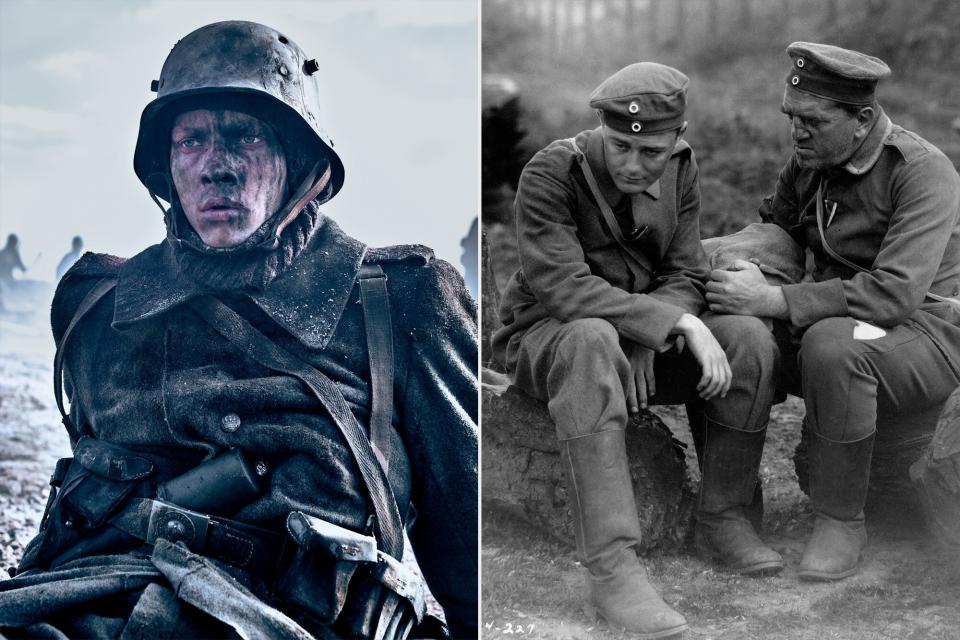
Reiner Bajo/Netflix; FilmPublicityArchive/United Archives/Getty
When it comes to stories about the futility and hell of war, few do it as well as Erich Maria Remarque's 1928 novel All Quiet on the Western Front, which follows a unit of German soldiers during World War I. The most recent film rendition of the story, made by and starring Germans, has earned raves for its depiction of human frailty and the absurdity of war. But the 1930 version was also considered award-worthy, becoming the first film to win both Best Picture and Best Director at the Oscars. A startling scene where a soldier's hands are left clinging to a barbed wire fence when the rest of him is blown away remains one of the most piercing cinematic commentaries on war to this day. Though the new film tells the story in its native language, the 1930 rendition is a masterpiece that still holds sway over filmmakers today.
If you liked Avatar: The Way of Water, watch Waterworld (1995)
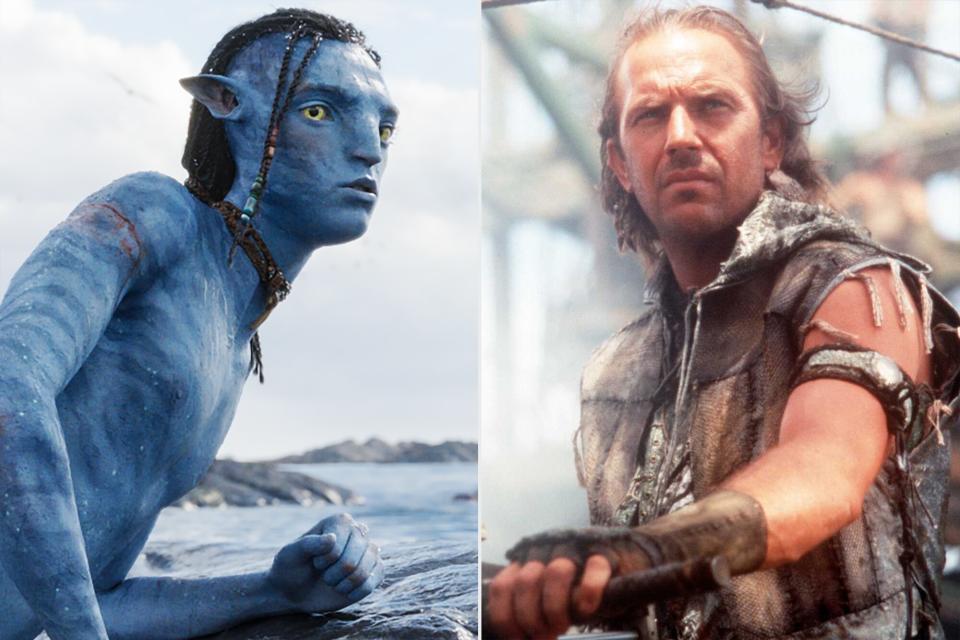
20th Century Studios; Getty
We swear this isn't some joke at Avatar's expense. (Waterworld was overly maligned — anything that can bring that much joy via a Universal Studios theme park show cannot possibly be bad.) The two films do have a lot in common, sharing stories of an Earth ravaged by climate change and the tactics humans must take to go on living. Both also feature wars waged on and in water, where humans seeking to colonize a new environment fight over limited resources. Avatar: The Way of Water and Waterworld center on themes of found family and the struggle to find a home in a new world. It's a coincidence that these titles would share so much, given that the original Avatar earned a lot of comparisons to another Kevin Costner film, Dances With Wolves — but it doesn't make the connection any less potent. Still, if James Cameron is taking suggestions, can Avatar 3 be inspired by Bull Durham?
If you liked The Banshees of Inisherin, watch Mikey and Nicky (1976)
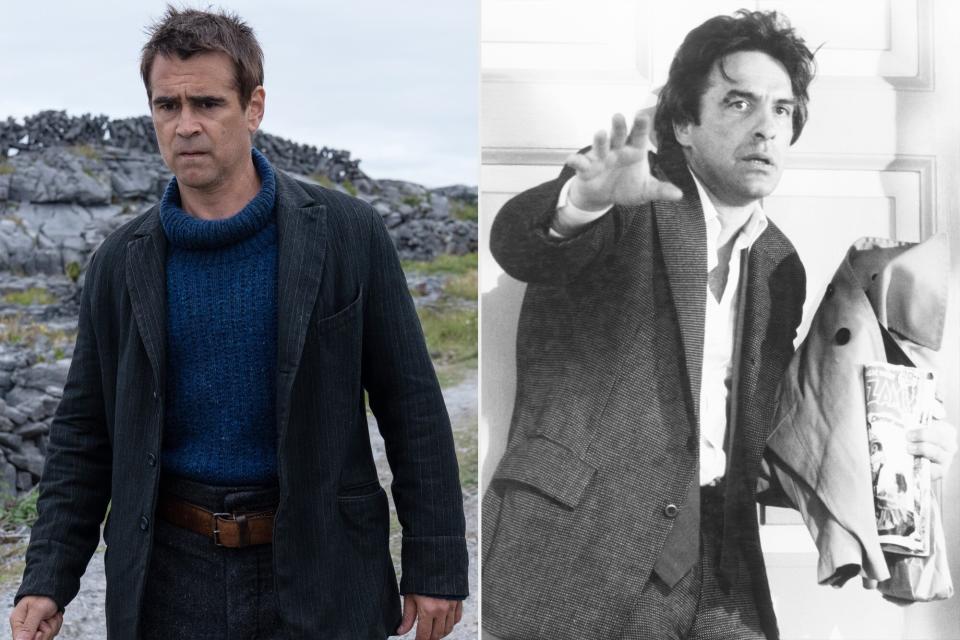
Jonathan Hession/20th Century Studios; Everett
Few things are quite as sad as a breakup between friends: the sudden dissolution of a once warm and meaningful relationship. The Banshees of Inisherin examines one such separation with dark humor and complexity in its tale of two Irishmen, Pádraic Súilleabháin (Colin Farrell) and Colm Doherty (Brendan Gleeson). Colm decides one day that he no longer wants to be friends with Pádraic and goes to violent extremes to make his point. From director Elaine May, Mikey and Nicky is a similar tale of male friendship with a tragic turn. When a mob boss puts a hit on his life, Nicky (John Cassavetes) calls his childhood friend Mikey (Peter Falk), the only person he thinks can save him. But over the course of a wild night, tempers flare and their connection frays. Both comedies with the blackest of hearts, The Banshees of Inisherin and Mikey and Nicky examine the limits of our oldest bonds and the fallout that comes with breaking them.
If you liked Elvis, watch Velvet Goldmine (1998)
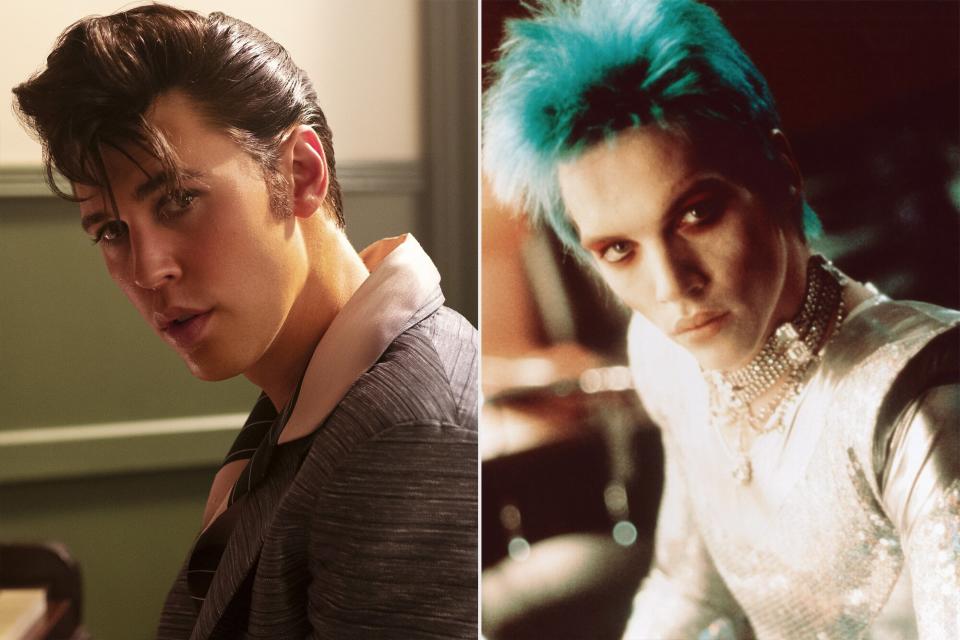
Hugh Stewart/Warner Bros.; Miramax/Everett
Excess is the name of the game in two films that get at something larger than life in their tales of rock musicians whose images transcend their music. Both movies open on a death — one real, the other a hoax — and seek to take us back through time with the aid of an unreliable narrator. While writer-director Todd Haynes tells the story of fictional glam icon Brian Slade (Jonathan Rhys Meyers), modeled on David Bowie and his alter-ego Ziggy Stardust, director Baz Luhrmann applies his showmanship razzmatazz to Elvis Presley (Austin Butler). Both movies use plenty of glitter and adrenaline-fueled editing to get at the sadder, darker truths that come with fame.
If you liked Everything Everywhere All at Once, watch Freaky Friday (2003)
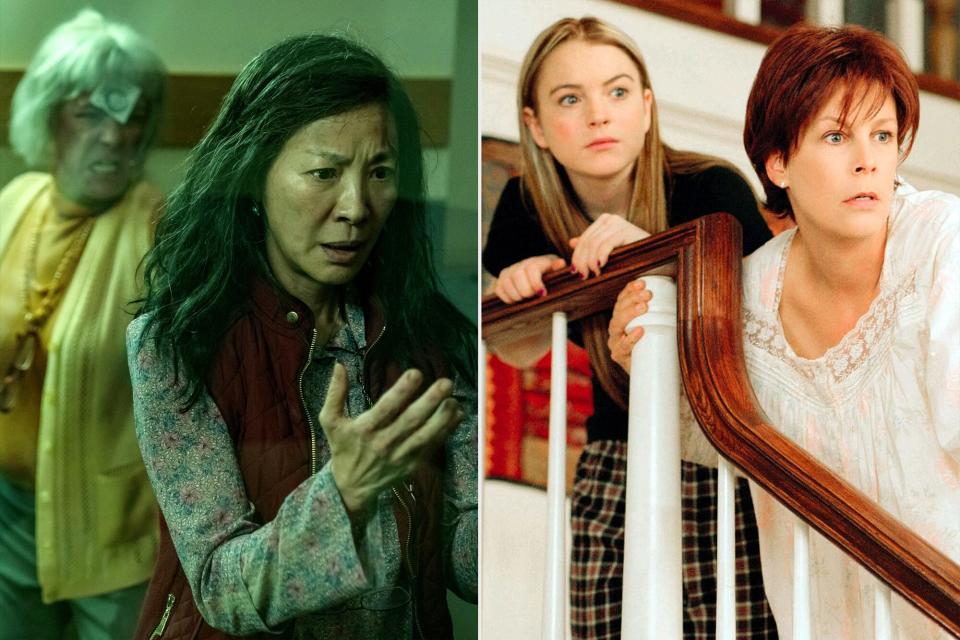
Allyson Riggs/A24; Walt Disney/Everett
Beyond its trippy multiverses and kung-fu action sequences, Everything Everywhere All at Once is the story of a mother desperately trying to expand her mind for the love of her daughter (with the added complication of heaps of intergenerational trauma). Using another supernatural framing device, Freaky Friday explores many of the same themes, as mom Tess (Jamie Lee Curtis) and daughter Anna (Lindsay Lohan) inadvertently swap bodies and must learn to understand the complexities of the other's life. If there aren't quite as many action sequences or universes as Everything Everywhere, there are instead true bops in the songs Anna performs with her band and superb performances from both Curtis and Lohan. Both films present moving, thrilling takes on the messiness of mother-daughter relationships. And as a bonus, you get to enjoy a Jamie Lee Curtis double feature.
If you liked The Fabelmans, watch Cinema Paradiso (1988)
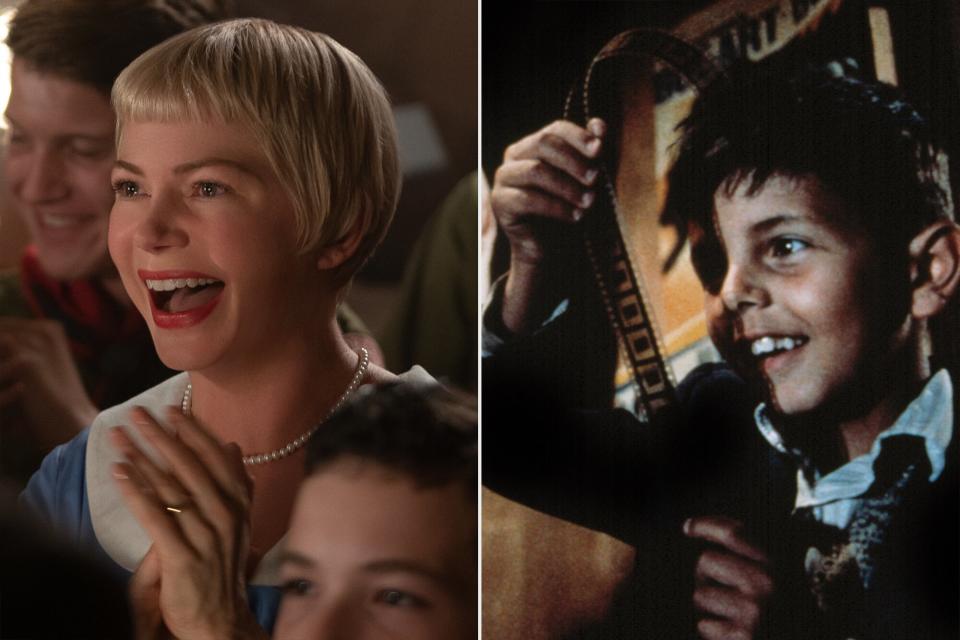
Merie Weismiller Wallace/Universal Pictures and Amblin Entertainment; Everett
Hollywood loves movies about the magic of making movies, but both The Fabelmans and Cinema Paradiso are something deeper and altogether more personal. With The Fabelmans, Steven Spielberg offered up his most reflective project yet, examining his childhood and the complicated relationship of his parents. Movies are a wellspring for young Sammy Fabelman (Gabriel LaBelle, playing the dramatized version of young Spielberg), a way for him to process the world, all the while contemplating the allure and cost of making art for a living. Similarly, Cinema Paradiso tells the story of a child, Salvatore (played by Salvatore Cascio, Marco Leonardi, and Jacques Perrin at different ages), who falls in love with the flickering screen as he is introduced to it through the eyes of local projectionist, Alfredo (Phillipe Noiret). As he moves from projectionist's assistant to eventual film director, Salvatore reckons with the power and impact of cinema in his life — and how it can be used to reconcile the gaps between his professional and personal lives. Both The Fabelmans and Cinema Paradiso spin myth-like yarns about movies and their power to both heal and destroy.
If you liked TÁR, watch All That Jazz (1979)
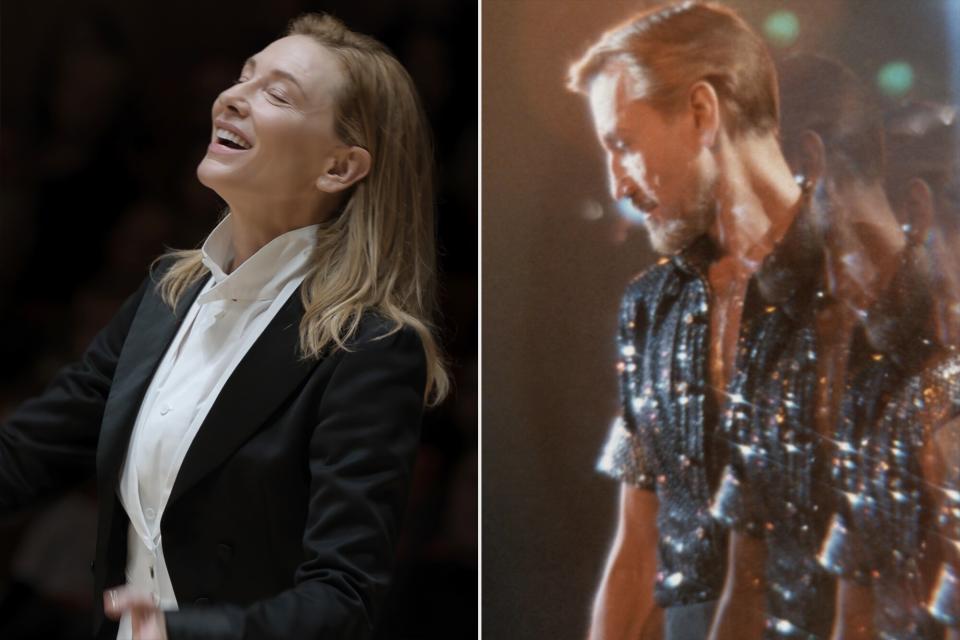
Focus Features; 20th Century Fox/Everett
It's the story of an egomaniacal musical genius, one whose morally dubious sexual exploits are finally catching up, threatening to destroy everything that's been created. That could describe both Lydia Tár (Cate Blanchett) and Joe Gideon (Roy Scheider) of All That Jazz. One is a composer, the other a director and choreographer — but they're equally brilliant, toxic individuals who are forced to reckon with their lives and careers as they fall to pieces around them. Not only do TÁR and All That Jazz seek to dissect the troubled lives of the geniuses at their centers, but they do so through metaphor, music and dream. While much has been written and debated about the hallucinatory, dream-like nature of TÁR, All That Jazz literalizes it as Joe imagines conversations with an Angel of Death (Jessica Lange) and directs musical numbers in his head that star his loved ones. Tár and Gideon are both pinned to metaphorical metronomes, hurdling toward their demise.
If you liked Top Gun: Maverick, watch The Dawn Patrol (1938)
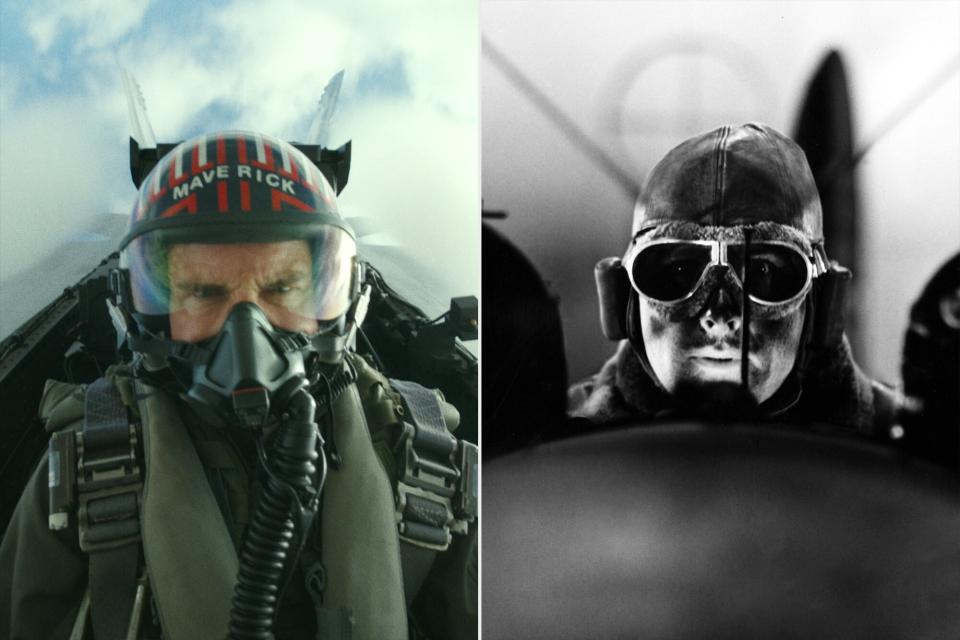
Paramount; Silver Screen Collection/Archive Photos/Getty
There is, of course, the original 1986 Top Gun, practically essential viewing for Top Gun: Maverick and its tale of legendary fighter pilot Maverick (Tom Cruise), who must seek redemption via a nearly impossible mission alongside Rooster (Miles Teller), the son of his late wingman, Goose (Anthony Edwards). But we suggest an older tale of heroism and impossible flight missions in The Dawn Patrol. Real-life friends Errol Flynn and David Niven star as two World War I RAF pilots who are part of a dwindling squadron that runs suicide missions against the German forces. The two grapple with honor, responsibility, and the futility of war, including the weight of sending relatives into battle, in a story that also makes room for astonishing aerial sequences. Top Gun: Maverick is altogether more fun, but The Dawn Patrol echoes its central message of camaraderie and bravery with emotional authenticity.
If you liked Triangle of Sadness, watch Swept Away (1974)
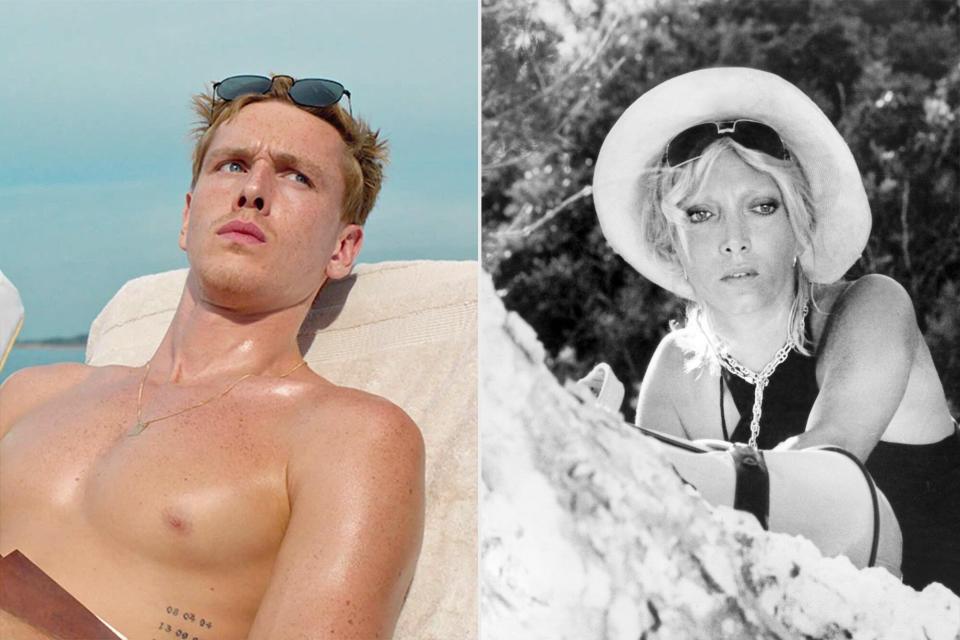
NEON; Universal History Archive/Universal Images Group/Getty
Class warfare and bleak social satire that skewers the rich never goes out of style, and there's a clear link between this year's Triangle of Sadness and Lina Wertmüller's Swept Away. In both films, the rich and the poor collide and go topsy-turvy when they end up stranded on an island. In Triangle of Sadness, wealthy vacationers are marooned after a storm (and violent bouts with sea-sickness and food poisoning). Cleaning woman Abigail (Dolly de Leon) turns out to be the only one of them with any survival skills, a trait that she turns to her advantage. In Swept Away, it's only two individuals — wealthy Raffaella Pavone Lanzetti (Mariangela Melato) and deckhand Gennarino Carunchio (Giancarlo Giannini) — who are shipwrecked on an island. Raffaella's obscene wealth (and lack of life skills) comes into conflict with Gennarino's communist leanings as their power roles on the island are reversed. Both stories take a Lord of the Flies approach to feral instincts that emerge in the wilderness. In both instances, the oppressed become the oppressors, interrogating the social structure as they're upended by violence, desire, and the need to survive.
If you liked Women Talking, watch Black Narcissus (1947)
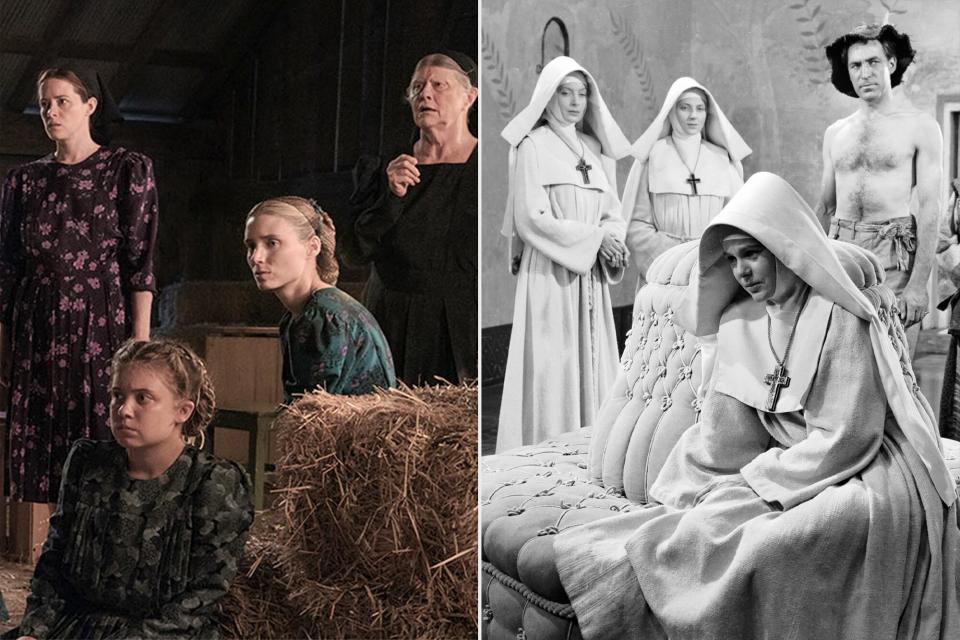
Michael Gibson/United Artists Releasing; John Kobal Foundation/Getty
When religious zealotry and isolation clash with lust and unfulfilled desire, women are brought to a crossroads and forced to examine the lives they've accepted without question. Such are the themes at the heart of both Women Talking and Black Narcissus, as the women at their centers are pushed to the brink. Black Narcissus follows a colony of nuns on a remote Himalayan mountain as they struggle to establish a convent and are beset by mistrust from the locals. Instead of coming together as the women do in Women Talking, the sisters retreat further into isolation, with Sister Ruth (Kathleen Byron) becoming consumed by her desire for local agent, Mr. Dean (David Farrar). In addition to the striking imagery and cinematography that defines both pictures, the two movies share an examination of the ways in which religion, puritanical leanings, and isolation can perpetuate cycles of violence and emotional disintegration — and the difficult choices that must be made in the face of such truths.
Related content:

